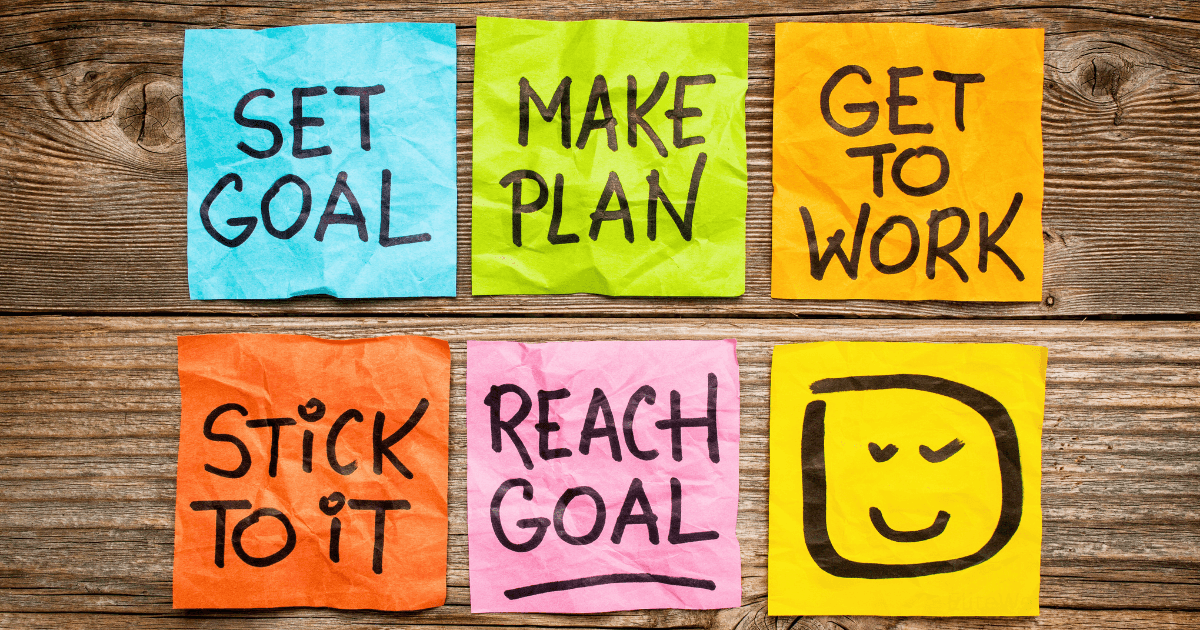Rejection Resilience: How Getting 50 ‘No’s’ Led to My Biggest Business Breakthrough

The email stared back at me from my screen: “Thank you for your proposal, but we’ve decided to go in a different direction.”
Rejection number 47.
I leaned back in my chair, that familiar knot forming in my stomach. Three years into building my consulting business, and I was still collecting more rejections than clients. This particular “no” stung more than most—it was for a dream project with a company I’d been pursuing for months.
As I added another tally to my rejection spreadsheet (yes, I actually tracked them), I couldn’t help but wonder: Was this persistence or just plain stubbornness? Was I building resilience or just documenting failure?
Little did I know that rejection number 50 would become the unlikely catalyst for completely transforming my business—and my relationship with rejection itself.
My Rejection Journey Begins
Rewind to 2022. After a decade in corporate marketing, I decided to launch my own consulting firm focusing on sustainability communications for mid-sized companies. I had the expertise, the passion, and what I thought was a solid business plan.
What I didn’t have was a strategy for handling rejection.
My first few pitches went nowhere. “We’re not focusing on sustainability right now.” “Your rates are outside our budget.” “We’re looking for someone with more specific experience in our industry.”
Each “no” felt personal, like a direct challenge to my worth and abilities. I’d obsess over each rejection, rewriting proposals and second-guessing my expertise. The emotional toll was exhausting, but I kept pushing forward, believing that persistence would eventually pay off.
By rejection number 20, I had developed a thicker skin, but not much else had changed. I was working harder, not smarter—chasing any potential lead and customizing elaborate proposals for companies that weren’t the right fit. My business was surviving, but barely.
The Tracking System That Changed Everything
After particularly painful rejection number 25 (a client who ghosted me after three rounds of interviews), I decided I needed a system to make sense of all these “no’s.” I created a simple spreadsheet with columns for:
- Prospect name
- How I found them (referral, cold outreach, etc.)
- Service they rejected
- Reason for rejection (if provided)
- Any feedback received
- My emotional response (rated 1-10)
- Potential lessons or insights
This might sound overly analytical, but it became my emotional lifeline. Instead of each rejection being a standalone blow to my confidence, it became a data point in a larger experiment. I was no longer failing; I was gathering information.
Patterns Begin to Emerge
Around rejection number 35, I started noticing patterns in my spreadsheet:
- Companies that found me through referrals rejected me less frequently than cold outreach prospects (25% vs. 80% rejection rate).
- Prospects who rejected my comprehensive sustainability strategy package often mentioned budget concerns, but expressed interest in smaller, focused projects.
- The industries where I faced the most rejection (retail and technology) were the ones where I had the least direct experience.
- My highest emotional response scores came from rejections where I had spent the most time customizing proposals without a paid discovery phase.
These insights were valuable, but I wasn’t yet sure how to apply them. I made small tweaks to my approach, but continued with my fundamental business model.
Rejection Number 50: The Breaking Point
In April 2024, I received rejection number 50. It was from a manufacturing company that seemed like a perfect fit. After three promising meetings and hours spent on a detailed proposal, the CEO sent a brief email: “We’ve decided to handle this internally. Your approach seems too theoretical for our practical needs.”
Something snapped in me that day. Not in a negative way—more like a moment of clarity. Fifty rejections was a significant sample size. If I couldn’t extract meaningful lessons from this much data, I never would.
I cleared my calendar for the day and spread out all my rejection data. I wrote each rejection reason on a sticky note and began grouping them on my office wall. Then I looked for the common thread.
The breakthrough hit me like a thunderbolt: I wasn’t being rejected because my expertise wasn’t valuable. I was being rejected because I was offering the wrong service model to the wrong clients in the wrong way.
The Pivot That Changed Everything
Based on my rejection analysis, I made three fundamental changes to my business:
1. From Comprehensive Solutions to Focused Modules
My original offering was a comprehensive sustainability communications strategy—a big-ticket item that required significant investment from clients. My rejection data showed that while companies valued this expertise, many weren’t ready for the full package.
I restructured my services into modular components that clients could purchase individually:
- Sustainability Messaging Workshop
- Stakeholder Communication Audit
- Impact Report Development
- Green Credentials Verification
This allowed clients to start small and expand our relationship over time—a much easier “yes” than my previous all-or-nothing approach.
2. From Generalist to Focused Expert
My rejection data revealed that I was trying to serve too many industries. The companies that did hire me were clustered in three sectors: consumer packaged goods, professional services, and manufacturing.
I made the difficult decision to narrow my focus to these three industries exclusively. This meant turning away potential clients in other sectors, which felt counterintuitive after so much rejection. But it allowed me to deepen my expertise and speak more directly to the specific challenges these industries faced.
3. From Proposals to Paid Discovery
Perhaps the most important insight from my rejection data was that I was investing too much upfront work without commitment from prospects. I was essentially providing free consulting through elaborate proposals.
I introduced a paid discovery phase—a half-day workshop that clients would pay for before receiving any formal proposal. This served two purposes: it filtered out clients who weren’t serious, and it gave both sides a chance to confirm the fit before committing to a larger engagement.
The Results: From Rejection to Revolution
The transformation wasn’t immediate, but it was dramatic. Within three months of implementing these changes:
- My conversion rate on new prospects jumped from 20% to 65%
- My average project value increased by 40%
- I started receiving inbound referrals from clients in my focus industries
- My work satisfaction soared as I spent more time delivering value and less time chasing poor-fit prospects
Most importantly, the emotional impact of rejection diminished significantly. When a prospect wasn’t a good fit, I could recognize it early and gracefully exit the conversation instead of trying to force a match.
By the one-year mark after my pivot, my business had tripled in revenue, and I had built a small team to help manage the growth. The business I run today bears little resemblance to the one that collected those 50 rejections—and I couldn’t be more grateful for every “no” that led me here.
The Rejection Resilience Framework
Through this journey, I developed what I now call my Rejection Resilience Framework—a system I use with my own team and share with other entrepreneurs. Here are its core components:
1. Track and Analyze Rejection Data
Don’t let rejections disappear into the ether. Document them systematically:
- Date and source of the opportunity
- Nature of the rejection
- Specific feedback (if provided)
- Patterns across multiple rejections
This transforms rejection from an emotional experience into an analytical one. As Harvard Business Review notes, entrepreneurs who systematically analyze failure are 40% more likely to succeed in subsequent ventures.
2. Separate Identity from Outcome
A business rejection is not a personal rejection. Create mental and emotional boundaries:
- Acknowledge the disappointment without internalizing it
- Practice self-compassion statements (“This outcome doesn’t define my worth or ability”)
- Celebrate the courage it took to face potential rejection
This mindset shift is crucial for maintaining the resilience to continue putting yourself out there.
3. Extract the Learning Value
Every rejection contains valuable information if you’re willing to look for it:
- What assumptions did I make that proved incorrect?
- What part of my offering didn’t resonate?
- What questions should I have asked earlier in the process?
- How could I better qualify prospects in the future?
According to a 2025 McKinsey study, businesses that extract systematic learnings from failure are 30% more likely to achieve long-term profitability.
4. Implement Strategic Pivots, Not Reactive Changes
Use accumulated rejection data to inform meaningful business pivots:
- Look for patterns across multiple rejections before making changes
- Test small adjustments before major overhauls
- Distinguish between rejection of your core value and rejection of your delivery method
This prevents the common entrepreneurial trap of zigzagging between strategies based on the most recent feedback.
5. Build a Rejection Support System
No one should face rejection alone:
- Find entrepreneur peers who can relate to your experiences
- Share both rejections and learnings openly
- Celebrate rejection milestones as badges of perseverance
I now have a monthly “rejection roundtable” with four other business owners where we share recent rejections and brainstorm insights together.
Rejection By the Numbers: What Research Tells Us
If you’re currently swimming in rejection, take heart in what the data tells us:
- According to a 2025 LinkedIn survey, 80% of successful sales require at least five follow-ups after the initial contact.
- Airbnb’s founders were rejected by seven venture capital firms before securing their first investment. The company is now valued at over $80 billion.
- A study of 100 successful entrepreneurs found they experienced an average of 3.8 business failures before their breakthrough success.
- Research from the University of Michigan shows that rejection can actually stimulate creativity and out-of-the-box thinking—exactly what entrepreneurs need for innovation.
The common thread? Rejection is not just normal; it’s often a prerequisite for extraordinary success.
Practical Takeaways: Building Your Rejection Resilience
If you’re currently facing your own rejection journey, here are practical steps you can take today:
1. Start Your Rejection Tracker
Create a simple spreadsheet or document to log rejections. Include:
- Basic information about the opportunity
- The specific rejection received
- Your immediate emotional response
- Any feedback or insights gained
Review this tracker monthly to identify patterns and potential pivots.
2. Develop Rejection Rituals
Create a personal ritual for processing rejection:
- I take a 20-minute walk after each significant rejection
- I write down three things I learned from the experience
- I share the rejection with my support group
- I immediately reach out to a new prospect
These rituals help process the emotional impact while maintaining momentum.
3. Set Rejection Goals
This sounds counterintuitive, but it works: Set goals for the number of rejections you aim to collect. For example:
- “I will get 10 rejections this month”
- “I will reach out to 5 dream clients, even if they’re likely to say no”
This reframes rejection as a sign of action rather than failure.
4. Practice Rejection Exposure
Deliberately seek small rejections to build your resilience muscle:
- Ask for a discount where it’s unlikely to be granted
- Reach out to a high-profile connection you’ve been intimidated to contact
- Submit a proposal for an opportunity that feels slightly out of reach
As with any skill, rejection resilience improves with practice.
The Counterintuitive Truth About Rejection
The most profound lesson from my 50 rejections wasn’t about business strategy—it was about the nature of rejection itself.
Rejection isn’t the opposite of success; it’s a component of it. Those 50 “no’s” weren’t detours on my path to breakthrough; they were the path itself. Each rejection contained a fragment of the insight that eventually led to my business transformation.
In the words of author Jia Jiang, who deliberately sought 100 rejections in his “Rejection Therapy” experiment: “What if rejection was not something to be avoided but something to be embraced?”
When you reframe rejection as a necessary ingredient for success rather than an obstacle to it, everything changes. You begin to see “no” not as a closed door, but as a directional sign pointing you toward the right door.
Your Rejection Journey
As you face your own rejections—whether you’re at number 5 or number 50—remember that the breakthrough often comes not despite the rejections, but because of them. The key is to stay in the game long enough to collect the insights you need.
Document your rejections. Study them. Honor them for the teachers they are. And keep going.
Your 50th “no” might just be the prelude to your biggest “yes” yet.
Have you experienced a business breakthrough after multiple rejections? Share your story in the comments below. How many “no’s” did it take before you found your path forward?






